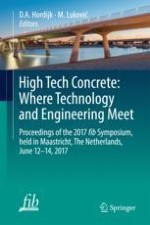2018 | OriginalPaper | Chapter
Optimising 3D Printed Concrete Structures Using Topology Optimisation
Authors : Pascal Martens, Maarten Mathot, Freek Bos, Jeroen Coenders
Published in: High Tech Concrete: Where Technology and Engineering Meet
Publisher: Springer International Publishing
Activate our intelligent search to find suitable subject content or patents.
Select sections of text to find matching patents with Artificial Intelligence. powered by
Select sections of text to find additional relevant content using AI-assisted search. powered by
